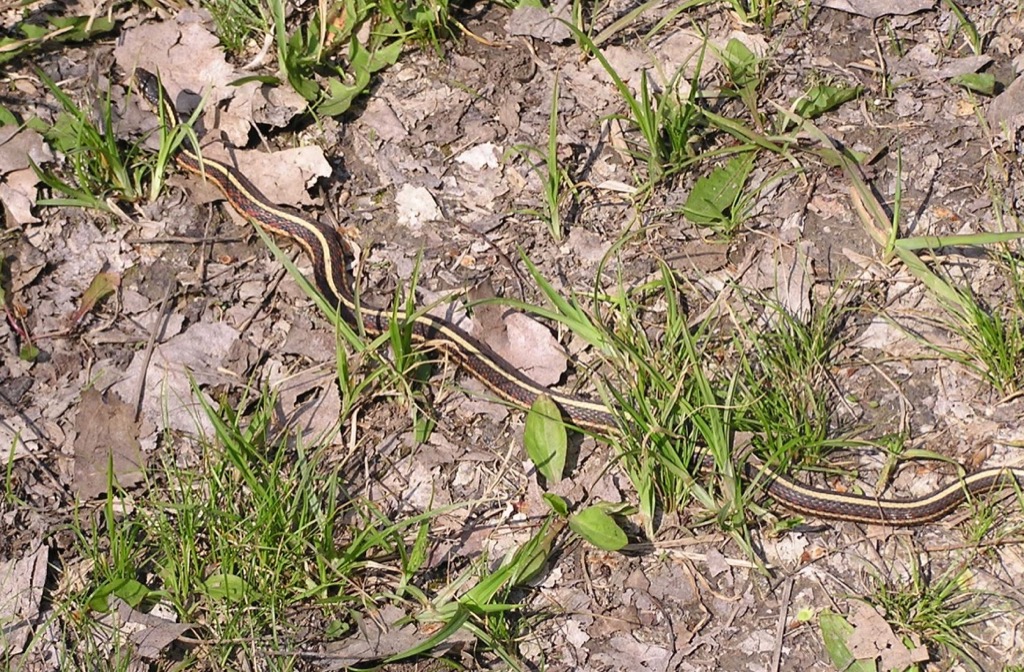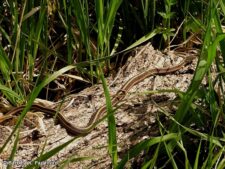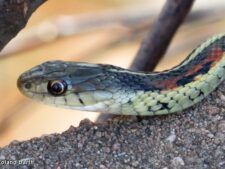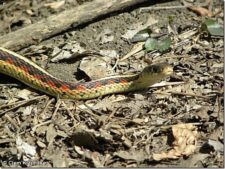
The Common Garter Snake grows up to 3 feet (90 cm) long. It has three yellowish lines down its back, with alternate red and black markings in between. Ventrally they are white to yellow. There are thirteen recognized subspecies. The subspecies in this area is the Red-sided Garter Snake (Thamnophis sirtalis parietalis). The snake in image 4 was found on a warm day in late October 2012 near the Fontenelle Forest visitors center.
Garter snakes are diurnal and are most active mornings during the warm season and during the warmest part of the day in cooler seasons. They are known to sleep together in large numbers. They are common in this area, where they are most often seen near water and sunning on open trails from spring to fall. After hibernating in large colonies, they emerge in March or April to mate. Females give live birth to as many as 20 young in the summer or fall.
There are usually many more males than females. The males emerge from hibernation first. Some of these males are able to release female pheromones to lure other males away from the den where the females will emerge somewhat later. Those males will then return to increase their chances of mating with a female. When handled or threatened they may emit a foul-smelling liquid from post anal glands. The saliva of garter snakes is somewhat poisonous and may be effective in subduing small prey, but their saliva is not strong enough to harm humans
The content of NatureSearch is provided by dedicated volunteer Naturalists of Fontenelle Forest who strive to provide the most accurate information available. Contributors of the images retain their copyrights. The point of contact for this page is: Loren Padelford.





